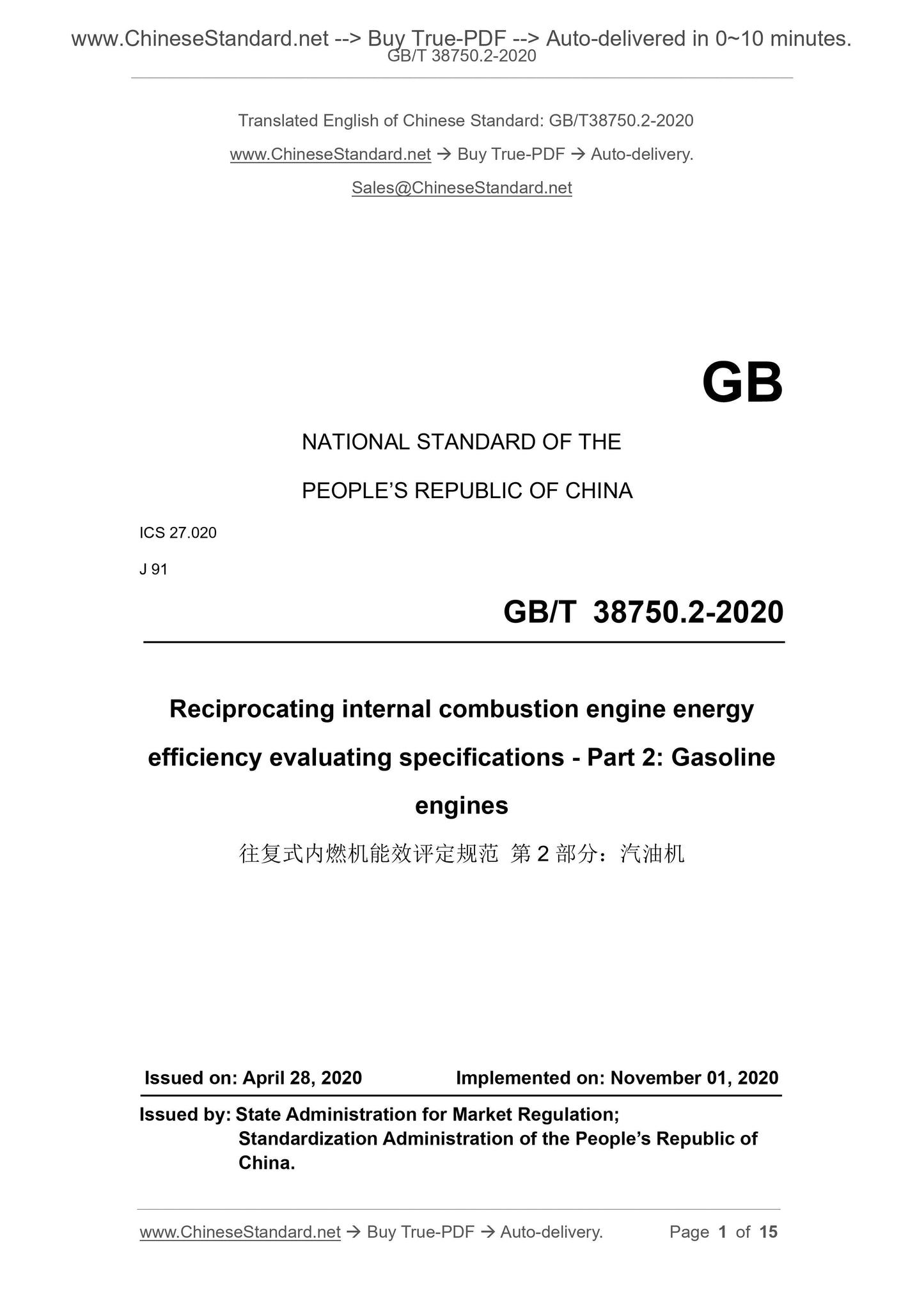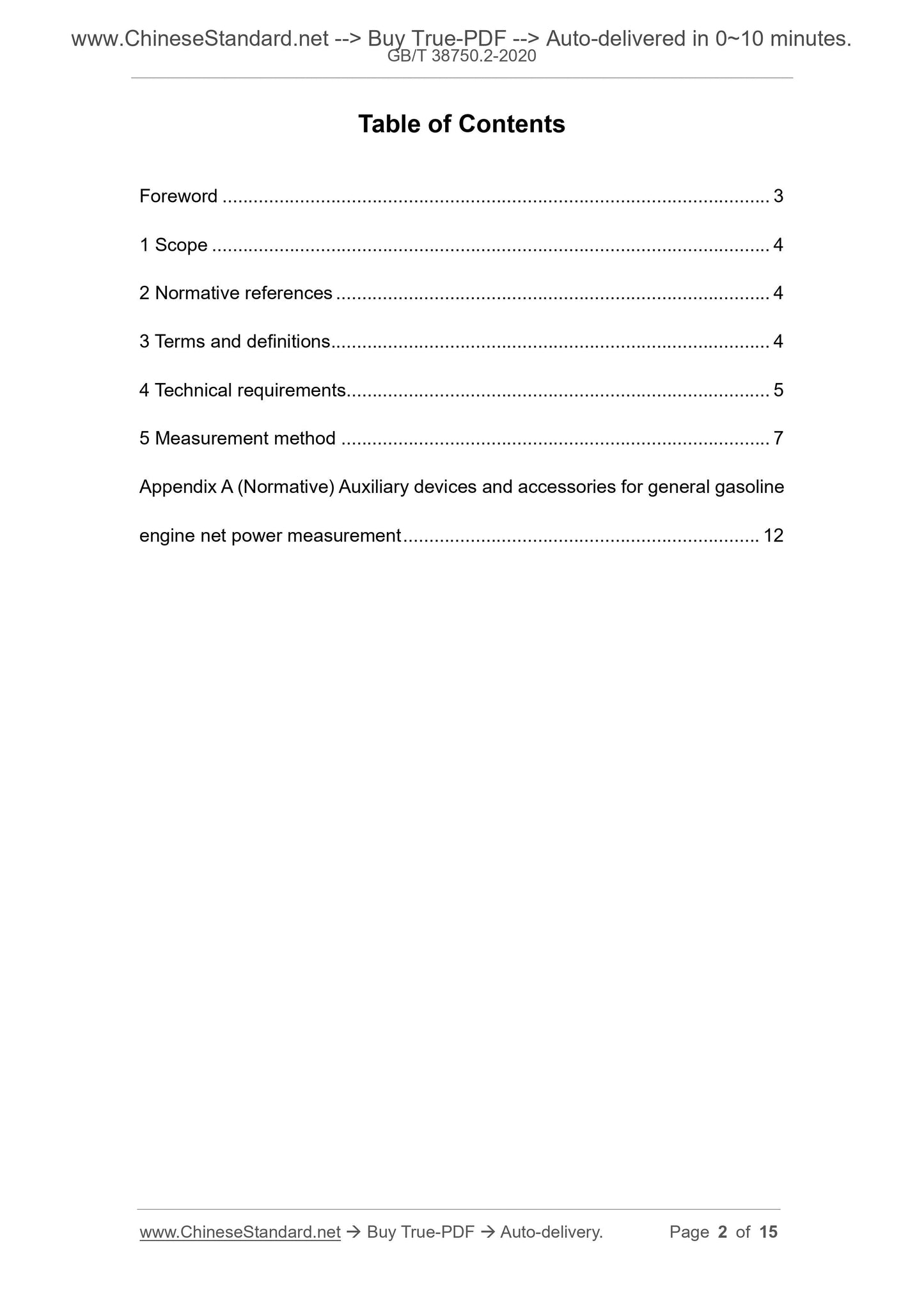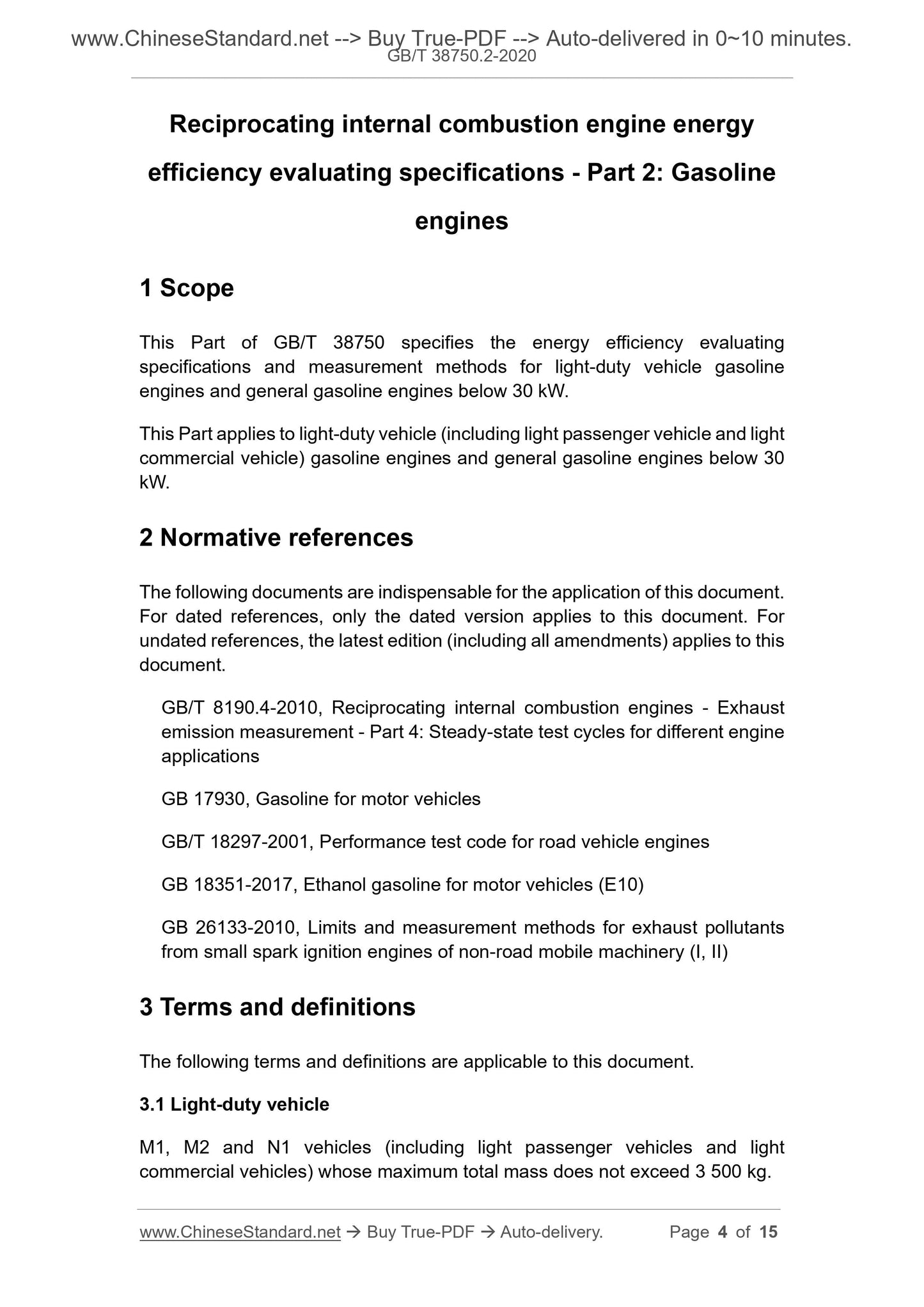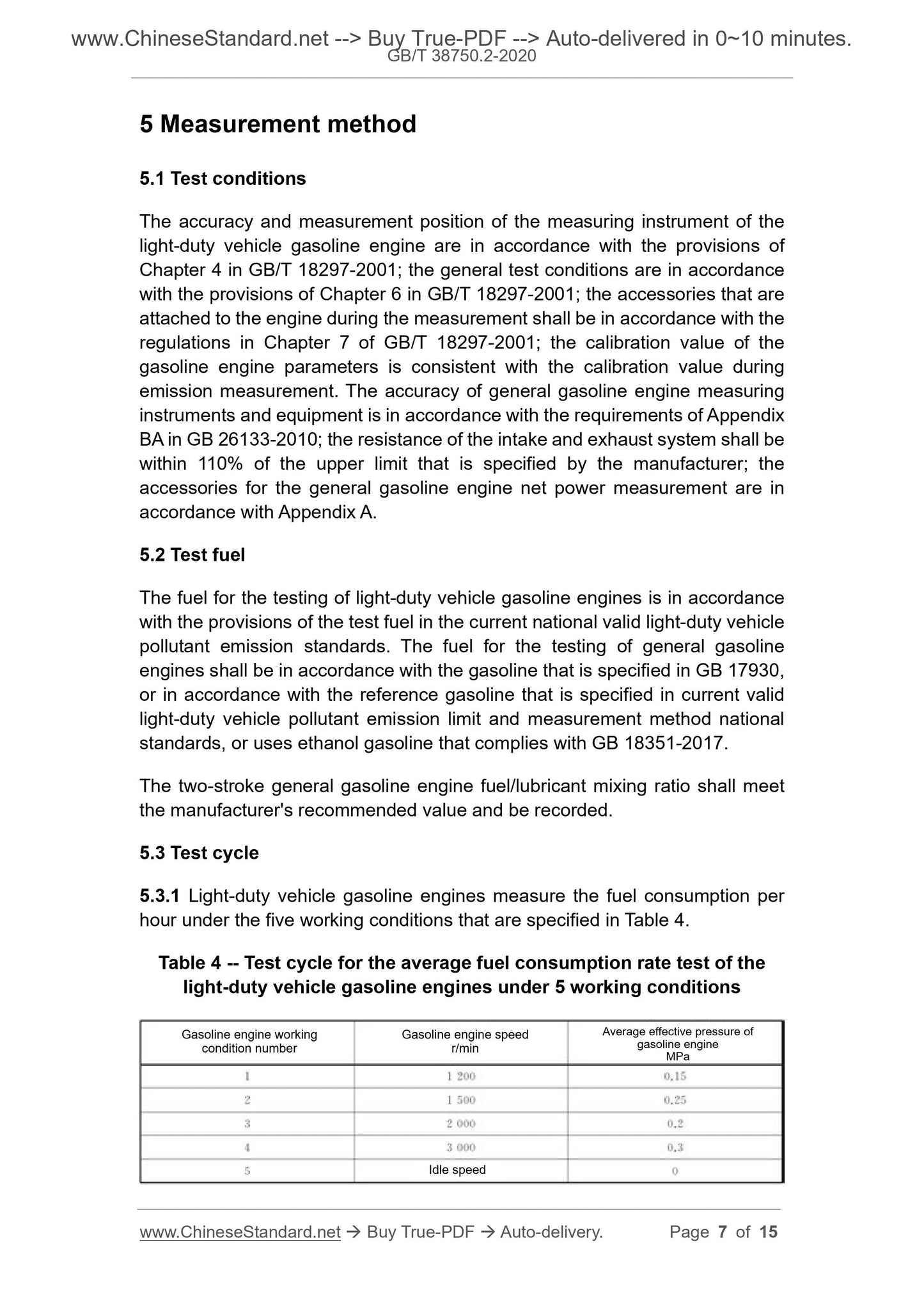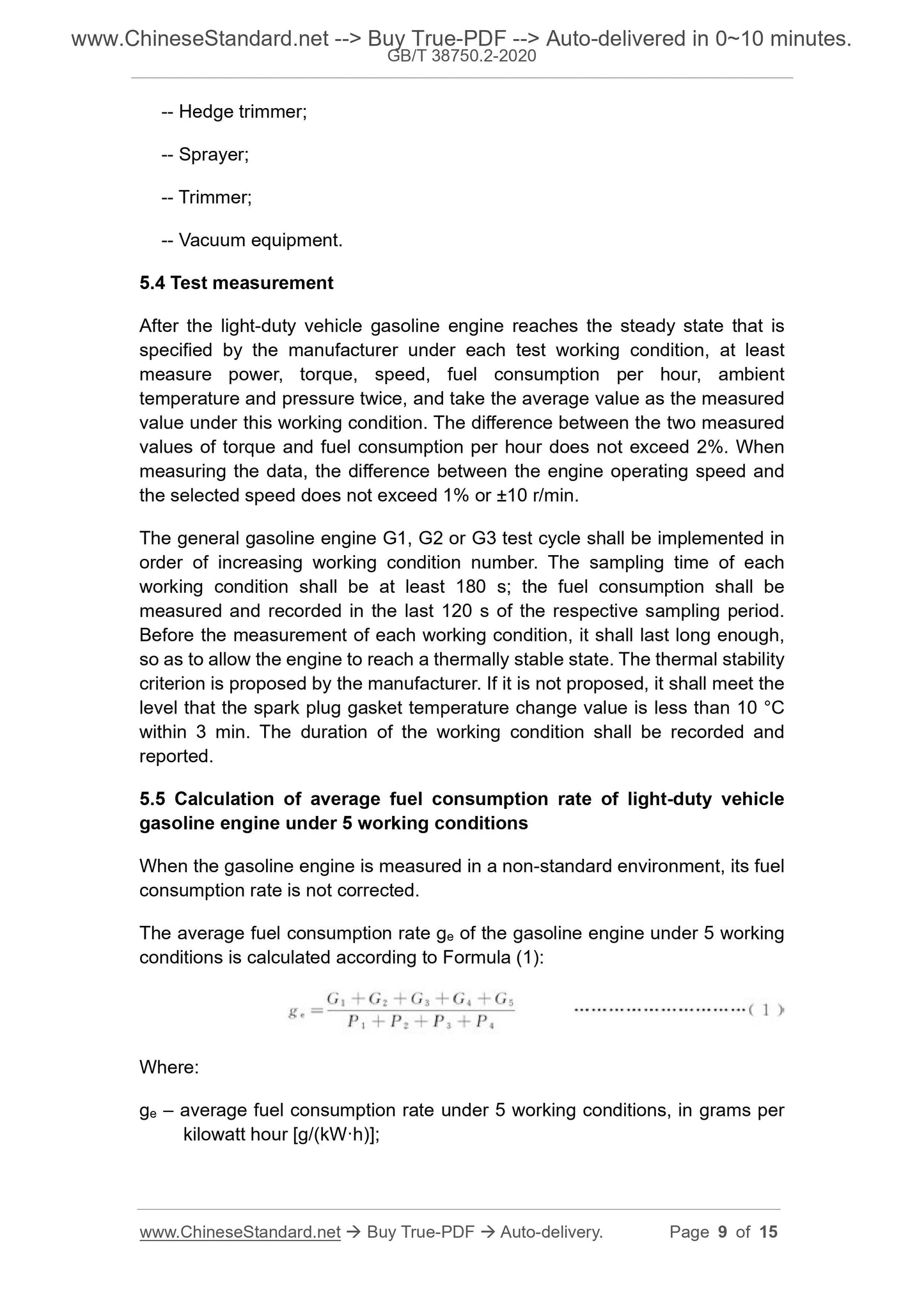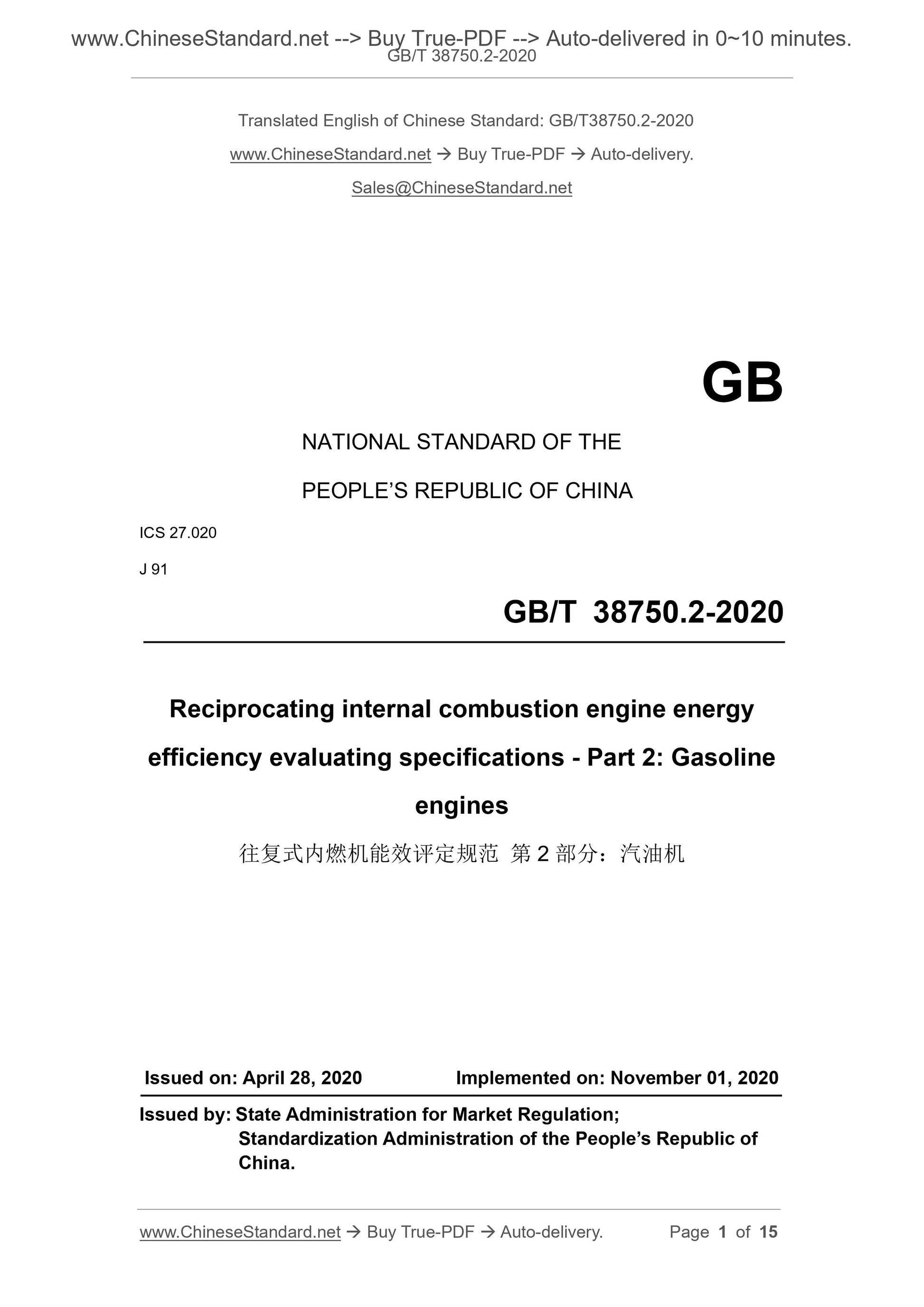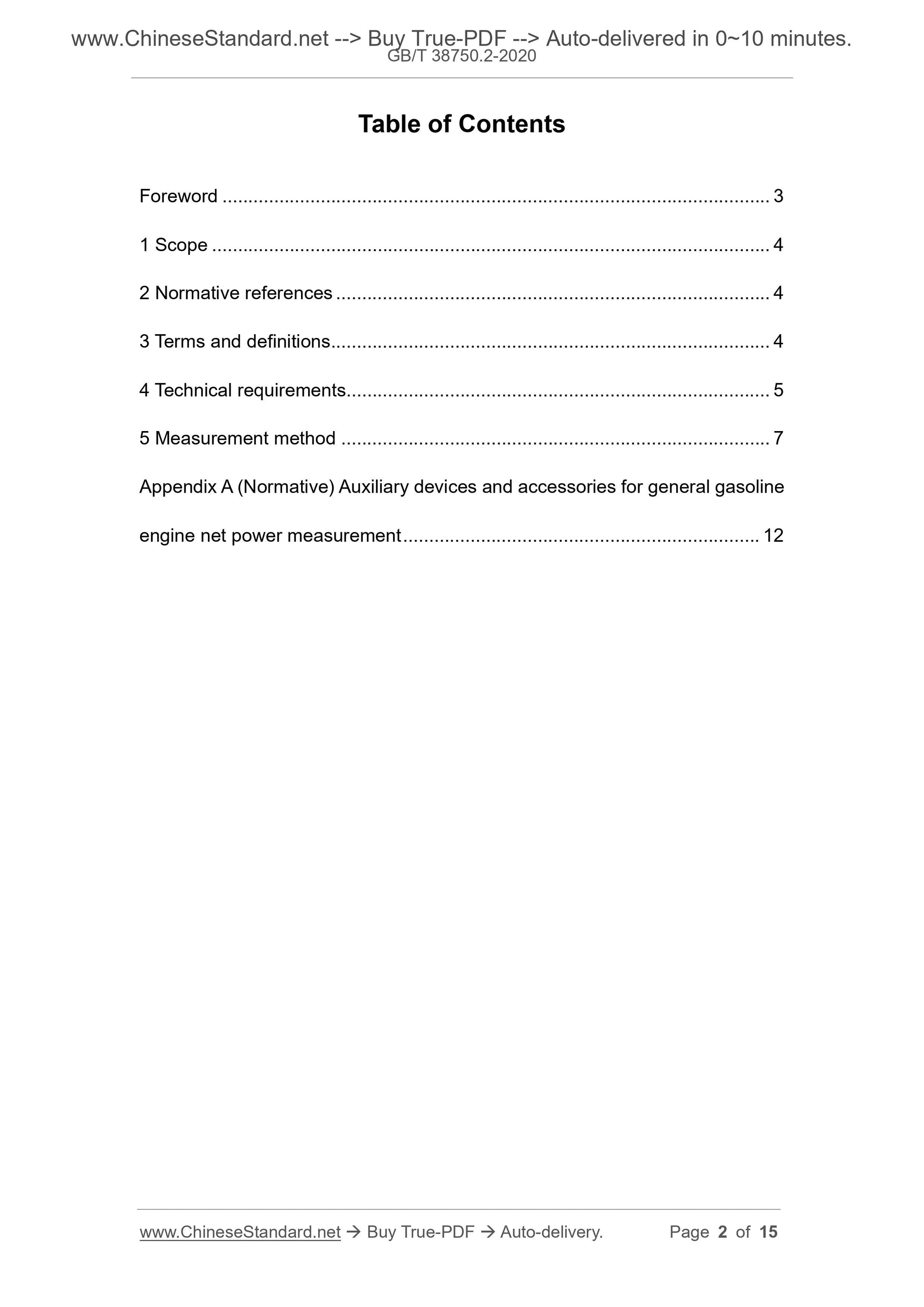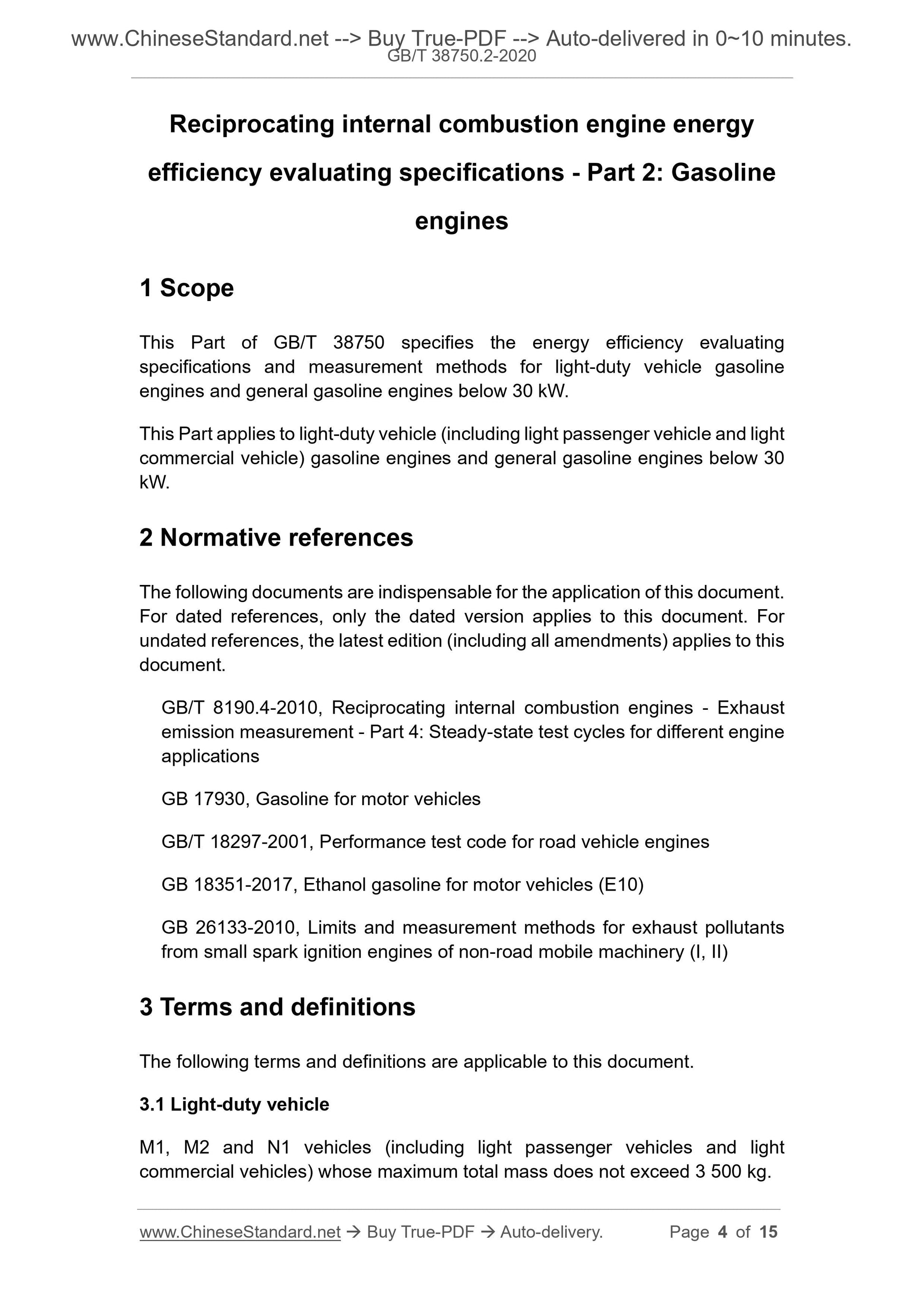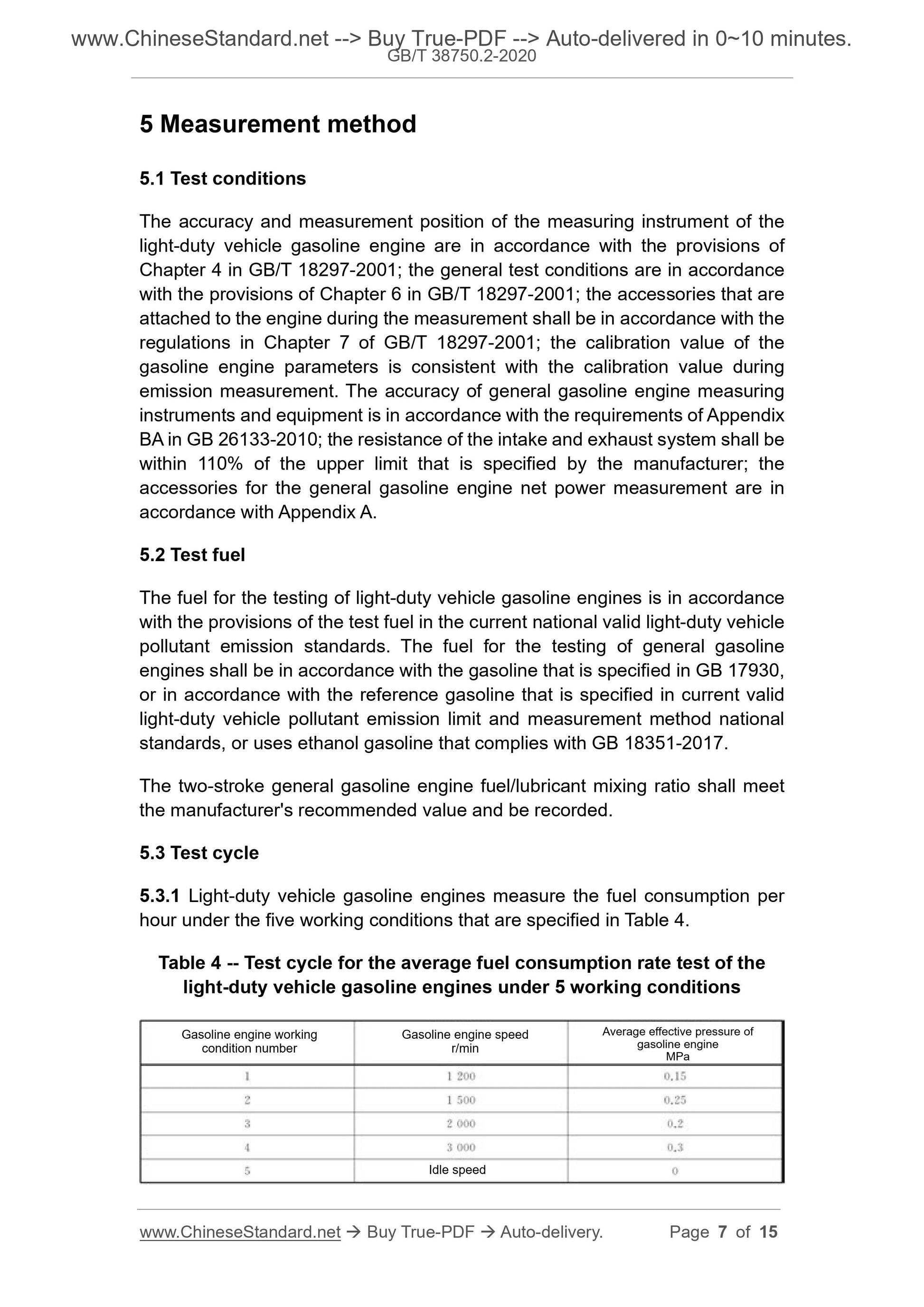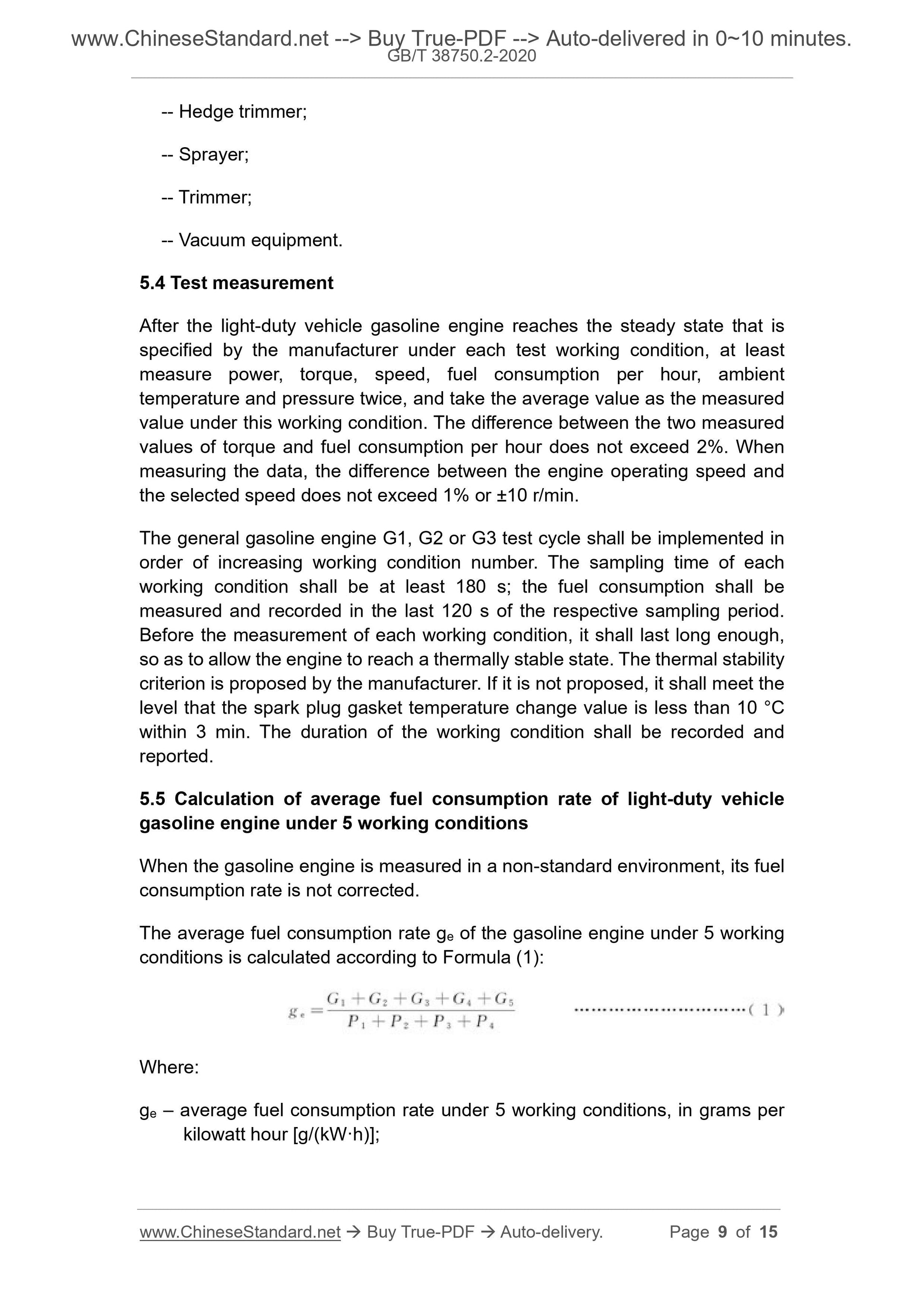1
/
of
5
www.ChineseStandard.us -- Field Test Asia Pte. Ltd.
GB/T 38750.2-2020 English PDF (GB/T38750.2-2020)
GB/T 38750.2-2020 English PDF (GB/T38750.2-2020)
Regular price
$195.00
Regular price
Sale price
$195.00
Unit price
/
per
Shipping calculated at checkout.
Couldn't load pickup availability
GB/T 38750.2-2020: Reciprocating internal combustion engine energy efficiency evaluating specifications - Part 2: Gasoline engines
Delivery: 9 seconds. Download (and Email) true-PDF + Invoice.Get Quotation: Click GB/T 38750.2-2020 (Self-service in 1-minute)
Newer / historical versions: GB/T 38750.2-2020
Preview True-PDF
Scope
This Part of GB/T 38750 specifies the energy efficiency evaluatingspecifications and measurement methods for light-duty vehicle gasoline
engines and general gasoline engines below 30 kW.
This Part applies to light-duty vehicle (including light passenger vehicle and light
commercial vehicle) gasoline engines and general gasoline engines below 30
kW.
Basic Data
| Standard ID | GB/T 38750.2-2020 (GB/T38750.2-2020) |
| Description (Translated English) | Reciprocating internal combustion engine energy efficiency evaluating specifications - Part 2: Gasoline engines |
| Sector / Industry | National Standard (Recommended) |
| Classification of Chinese Standard | J91 |
| Classification of International Standard | 27.020 |
| Word Count Estimation | 12,164 |
| Date of Issue | 2020-04-28 |
| Date of Implementation | 2020-11-01 |
| Issuing agency(ies) | State Administration for Market Regulation, China National Standardization Administration |
Share
